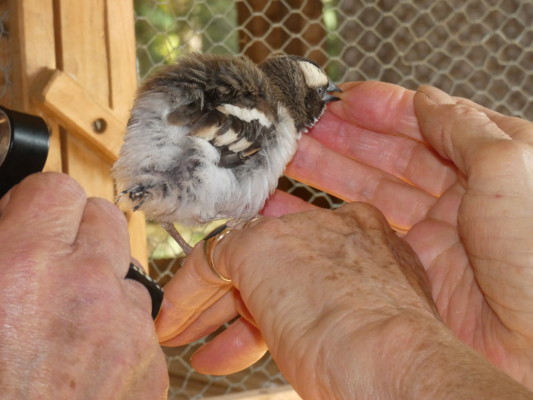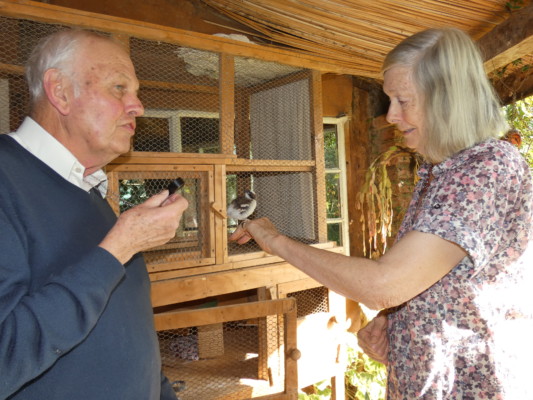When we visited El Karama Ranch in Laikipia we expected to be shown a lot of large farm livestock and to see impressive wildlife, such as elephants. We experienced both but we were also consulted about a young white-browed sparrow-weaver (Plocepasser mahali) that had been found by Mrs Lavinia Grant (a long-term Kenya resident, renowned author and artist) who found the fledgling in a nest that had fallen, or perhaps been rem oved, from a tree.
oved, from a tree.
Mrs Grant had done a wonderful job of hand-rearing this youngster – a specially-constructed spacious cage on her verandah, a diet that included insects and grit, and lashings of tender loving care (TLC). However, it was soon apparent that this bird had a problem – its flight (primary) and tail feathers were failing to develop and differentiate properly and instead were falling out prematurely and presenting as stunted, twisted, structures. In particular, the fledgling appeared to have no tail.
We managed to obtain some of the dropped feathers and we took them back to Mpala Research Centre (MRC) where John, Dr Maureen Kamau (veterinary surgeon at MRC) and Dr Sharon Mulindi (veterinary intern at MRC) carried out a preliminary examination under field conditions.
Preliminary investigations suggest that this is a developmental abnormality, a “feather follicular dystrophy”, rather than an infectious or nutritional disease, but further, more sophisticated, laboratory tests are planned. Watch this space!
This case illustrates how even in the “bush” in East Africa, one can use techniques, improvised as necessary, to investigate an animal disease – even if the patient is a small wild bird, not a cow, a dog or an elephant!
Courtesy of John Cooper- 25/02/2020
